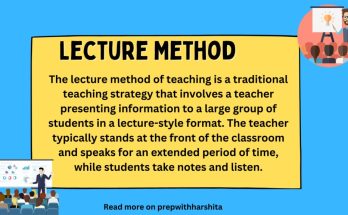In the intricate ecosystem of a child’s education, the partnership between parents and teachers stands as a cornerstone of success. When communication between these two pivotal figures is robust, consistent, and empathetic, it creates a powerful synergy that significantly enhances a student’s academic performance, social-emotional development, and overall well-being. Conversely, a breakdown in this vital connection can lead to misunderstandings, missed opportunities for intervention, and a fragmented understanding of a child’s needs. Therefore, cultivating effective strategies for parent-teacher communication is not merely a beneficial practice; it is an essential investment in fostering a truly supportive and thriving learning environment.
One of the foundational elements of effective parent-teacher communication lies in **proactive and consistent outreach**. Waiting for problems to arise before initiating contact often sets a defensive tone. Instead, teachers who proactively reach out to parents early in the academic year, even with simple positive observations, begin to build a rapport rooted in collaboration rather than crisis management. A brief email or a quick phone call describing a student’s positive engagement in class, a moment of kindness towards a peer, or an emerging talent can lay the groundwork for a trusting relationship. This initial positive contact humanizes the teacher and establishes an open line of communication. Similarly, parents who initiate contact with an introductory email or a brief note expressing their commitment to their child’s education also contribute to this proactive approach, signaling their willingness to be engaged partners.
Beyond initial outreach, **establishing clear and diverse communication channels** is crucial. Different parents have varying schedules, preferences, and access to technology, so relying on a single method can inadvertently exclude many. Teachers might utilize a combination of traditional and modern tools: regular newsletters (digital or print) summarizing classroom activities and upcoming events, a dedicated classroom website or online platform (like Google Classroom or ClassDojo) for sharing assignments and resources, scheduled parent-teacher conferences, and individual phone calls or emails for more personalized discussions. For parents, understanding these preferred channels and utilizing them appropriately helps streamline communication. For instance, reserving detailed academic concerns for a scheduled conference rather than a quick email ensures a more comprehensive discussion. The key is to offer flexibility and clarity regarding the best ways to connect, ensuring that communication is accessible to all.
**Empathy and a focus on the child’s best interests** must underpin every interaction. Both parents and teachers share the common goal of nurturing the student’s growth, and framing discussions around this shared objective can help navigate potentially sensitive topics. When concerns arise, approaching the conversation with a spirit of partnership rather than blame is paramount. For a teacher, this might involve starting a conversation about a behavioral issue by first highlighting the student’s strengths, then gently describing the observed challenge, and finally, inviting the parent’s input on potential contributing factors or solutions. For parents, approaching a teacher with a question about a grade or classroom dynamic by expressing curiosity and a desire to understand, rather than accusatory language, fosters a constructive dialogue. Using “I” statements (“I’ve noticed…”) rather than “you” statements (“You haven’t…”) can de-escalate tension and promote a more collaborative problem-solving approach.
Furthermore, **active listening and mutual respect** are indispensable elements. Effective communication is a two-way street. When parents and teachers engage, both parties must be prepared to truly listen to understand the other’s perspective, rather than simply waiting for their turn to speak. Teachers gain invaluable insights into a student’s home environment, learning styles, and emotional state from parents, which can significantly inform their approach in the classroom. Similarly, parents benefit from the teacher’s professional observations of their child’s academic progress, social interactions, and classroom behavior. This exchange of information, characterized by respect for each other’s expertise and roles, creates a more complete picture of the child and allows for more tailored support strategies. Disagreements can arise, but approaching them with a commitment to finding common ground and a willingness to compromise ultimately serves the child’s best interests.
Finally, **celebrating successes and providing positive feedback** are just as important as addressing challenges. Communication should not solely revolve around problems. Sharing moments of triumph, academic breakthroughs, or positive behavioral shifts reinforces a student’s efforts and strengthens the parent-teacher bond. A teacher sending a quick note home about a student mastering a difficult concept or showing exceptional leadership on a project can brighten a parent’s day and encourage continued engagement. Similarly, parents expressing gratitude for a teacher’s dedication or a specific act of support strengthens the teacher’s morale and reinforces the value of their efforts. These positive interactions build a reservoir of goodwill, making it easier to tackle more challenging conversations when they inevitably arise.
In essence, effective parent-teacher communication is a dynamic process built on a foundation of trust, respect, and shared commitment. It requires proactive engagement, diverse and clear communication channels, empathetic dialogue, active listening, and a consistent focus on the student’s holistic development. When parents and teachers genuinely partner, leveraging their unique insights and expertise, they create a powerful synergy that empowers students to reach their full potential, fostering a nurturing educational journey that extends far beyond the classroom walls.




